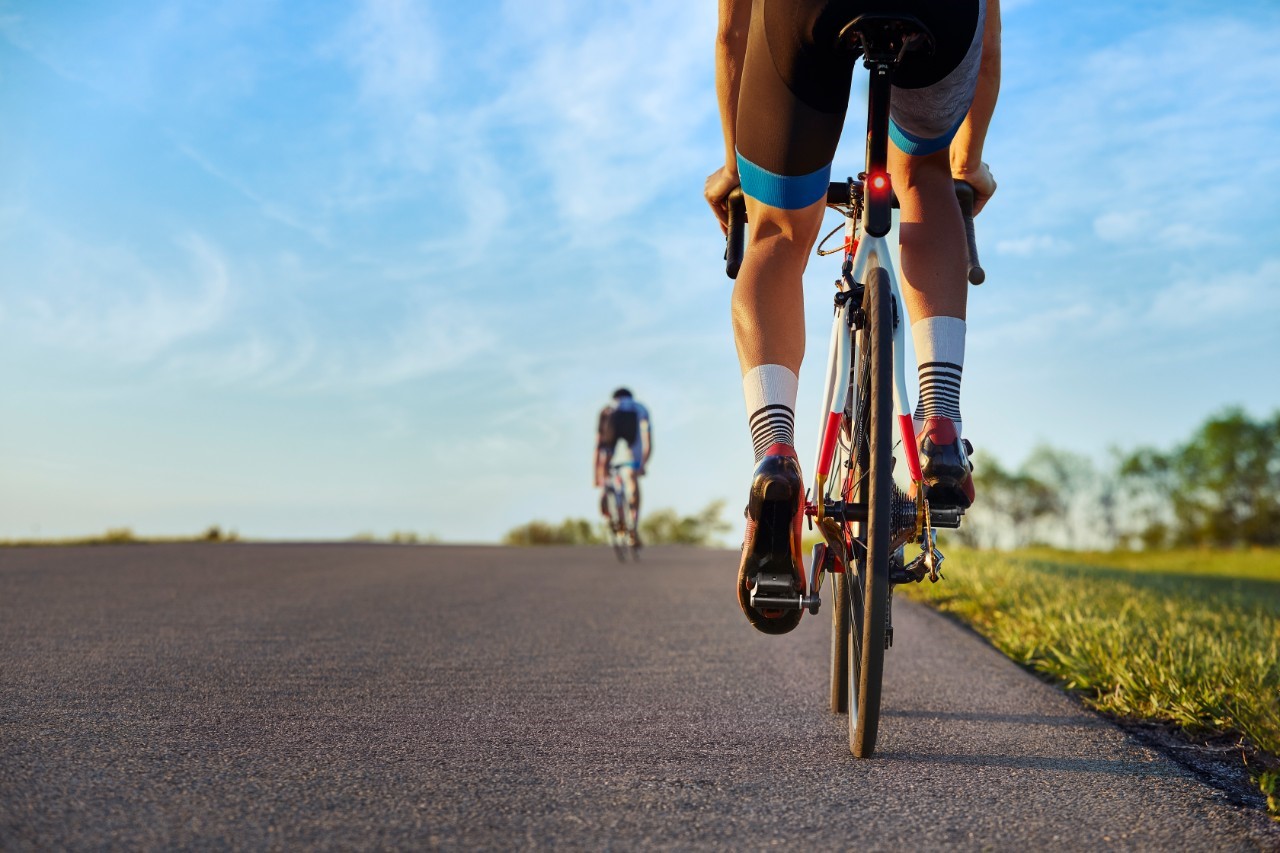
Uphill Training for Bikes Can Only Be Trained on Hills?
Uphill Training for Bikes Can Only Be Trained on Hills?
I guess that for Taiwanese cyclists, “going uphill” is the easiest and most enjoyable basis to check their own abilities and whether they have made progress? In the early days in Taipei, everyone would start their stopwatches from Central Community and ride to Fengguikou or even further. In Central or Southern Taiwan, there are also famous paths, such as County Highway No. 139 Fengshan Temple, Chikan Top, and Tengzhi. Of course, being the mountainous Taiwan, we have challenging paths like Wuling Pass East and Wuling Pass West waiting for you as well!
(Climbing is the main way for Taiwanese cyclists to assess their ability.)
Many companions will ask me, “How can I make the training of uphill climbing easier?” But, actually, in my impression, there’s really no relaxing in uphill climbing. Maybe it’s like what Uncle Ben said to Peter Parker after he became Spiderman, “With great power comes great responsibility!” When you have a stronger power output and a healthier physical condition, you’ll pedal even harder when climbing a hill. It doesn’t become easier when you become stronger, but instead you’ll push yourself into a state of being even more out of breath!
However, there seems to be a lot of myths about uphill training, such as “climb ________ a hundred times” and “the amount of climb accumulated,” however, after a few weeks, there won’t be any more progress. We’ll dispel and crack down on the common myths right here, right now!

Is it because there are too many things in the basket, or is it because it’s too hard for you to push?
Fellow cyclists will probably hear this quite often, “Look at him, he’s so thin, he must be a climber.” So, does being thin mean you’re suitable to ride uphill? Riding uphill is like pushing a shopping cart on a ramp. The decisive factors for whether you can push it fast is whether there are very few things in the basket (body weight) and whether the person pushing is strong enough (power output).

However, muscle mass is quite snobbish. As your weight becomes lighter, muscle mass is bound to decline as well, so you need to find a balance between the two when going uphill for a long distance. Therefore, we’ll probably discover that many athletes or cyclists who originally had great climbing ability may start getting too obsessed with practicing, so although their weight continues to drop, they don’t make any progress.
In addition, people might not notice as much, but, actually, heavier cyclists might not mean they’re not good at riding uphill. For example, the well-known Peter Sagan or retired classic race cyclists Fabian Cancellara and Thor Hushovd, although they’re body type aren’t like “climbers,” but they still performed well in the uphill section of the single-day races in the Spring.

Then how come these types of cyclists seem to not be able to do as well as the professional climbers in the mountains for multi-day races? The number one main reason is their heat dissipation. Compared to those lean climbing cyclists, for the cyclists who have larger muscle mass, even if they can achieve the same climbing performance, the required cooling time required or the energy consumed by cooling is higher, so they may still be able to cope with the single-day races, but when the race duration is lengthened, then they seem to not have an advantage!
Therefore, we highly recommend that when you start the uphill training, you should understand the situation between “weight” and the “power output” is sort of like burning a candle at both ends. You need to first understand whether you have a weight problem, or whether you need to enhance your output, so that you won’t cause an imbalance in the training between the two and regret it afterwards!
But do you really only want to improve your climbing ability?
We just finished talking about the love that fellow cyclists have for riding uphill, and after analyzing the preliminaries of uphill training, we end up heading back to the question again. Is it because I have schizophrenia? Just listen to what I have to say. The main reasons why cyclists like to ride uphill are that not only are there fewer cars, fewer people, and are you able to see more beautiful scenery, from the safety aspect, even when you are fully accelerating when going uphill, the speed is still only 30 kilometers per hour, which is a lot safer than riding on flat roads.

However, in terms of “improving riding performance,” training uphill on mountain roads may actually lower “other riding abilities”! What I’m saying may sound a bit sensational. Let’s first use examples of well-known cyclists, and you’ll be able to feel the authenticity of this sentence!
In the three major road bicycle races, namely the Tour de France (France), the Vuelta a España (Spain), and the Giro d’Italia (Italy), there are definitely many uphill sections, and these are where a lot of great impressive climbers were born. However, as training becomes more scientific and specialized, you will notice that being able to dominate in the mountain section is still not enough to shake the final results. Those cyclists who are great at time trials also have the ability to do just as well as their competitors during the uphill sections!
Let’s look at Tommy Dumoulin, the 2017 Giro d’Italia champion, and Bradley Wiggins, the 2012 Tour de France yellow jersey (who’s also the former world hour record holder). They are both great at time trials, but they are also able to compete with those climber-type cyclists on those key uphill sections, not to mention Chris Froome, who has been dominating the three major races in recent years. Looking back at the good climbers, whether it’s Andy Schleck in the early years or the recent Nairo Quintana, even with amazing climbing ability, they always fall short during the time trials!
Time trial cyclists are able to train in their climbing ability, but climbers may not be able to ride well on a flat road. So, why is that? I still remember when I was preparing for the National Games tryouts between 2011 and 2013, Taipei Team Coach Sean Huang told us, “Practice time trials to strengthen the threshold ability for a long time, this ability will not be too bad to climb. But if all you do is uphill training, of course your climb will improve, but your smoothness in pedaling on flat roads will decline.”
With the slow accumulation of training experience, I had a better understanding of that feeling. Here is an example:
When a whole class of students lives under an authoritarian, hierarchical educational approach, they would all seem serious and aggressive, but, actually, they are all “passive.” When there’s no one watching today, the whole class of students will be like birds that are finally able to fly freely instead of being caged up. On the contrary, students who are in an open educational environment must learn to self-manage and “actively” learn to grow. It doesn’t matter how the environment changes today, this group of students will still have stable learning performances!
Training on a flat road is like an open educational environment. In order to carry out intensity training on a flat road, you need carry out with a more “active” and higher rotational pedaling. It also allows you to pedal with a high wattage no matter which situation you are in. Conversely, training on hills is like an authoritative educational method. It’s because of having to “overcome” the challenges brought by the hills that you have to passively pedal with a higher wattage in order to “cope.” When there’s no stimulation from the slope today, or when you’re in an environment where the slopes aren’t as steep, you will not be able to actively apply more power to the pedals!

(A good time trial cyclist will be able to do well in climbing also, but a good uphill climber may not necessarily do as well!)
In terms of training, whether it’s on the wattage or heart rate, on a flat road, you can achieve the same intensity as in uphill climbing, and in this training, you need to be even more focused on the changes in body posture, rotational speed, and output angle, as well as high-speed bike control and other technical capabilities. Therefore, cyclists who want to strengthen their climbing ability do not actually need to stick to choosing to train on an uphill section, if they use flat roads to carry out intensity training, it will, instead, help them to have a better performance when facing long and gentle slopes!




